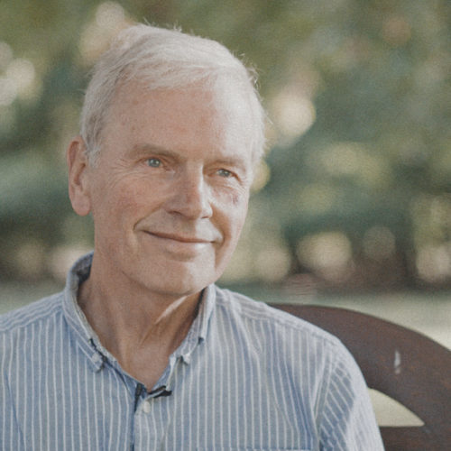Your cart is currently empty!
Chris Dewdney

Chris Dewdney obtained a joint degree in Physics and Philosophy from the University of Warwick in 1973. He then continued his interest in philosophy of physics, at the postgraduate level, studying History and Philosophy of Science at the University of Cambridge; there his dissertation was written on Niels Bohr’s Interpretation of Quantum Mechanics.
Chris then obtained funding from the British Science Research Council to work towards a PhD in David Bohm’s group in the Physics Department at Birkbeck College in London. There, Chris started to read Bohm’s papers on the notion of order in physics, attended Bohm’s undergraduate lectures on quantum theory and the frequent postgraduate seminars. Initially, Chris was the only full-time PhD student at that time working in Bohm’s group. At Birkbeck, students had to find their own PhD topic, the main thrust of the research was around formulating a mathematical description of Bohm’s notion of the holomovement and the processes of ‘becoming.’ Bohm’s 1952 hidden-variable theory was not discussed at the time and it was pure serendipity (browsing in the bookshop) that lead Chris to formulate his own PhD study demonstrating in detail how Bohm’s 1952 theory accounted for all of the ‘paradoxical’ features of quantum theory, starting with the double-slit experiment. Whilst at Birkbeck, Chris also produced the first computer-generated motion picture animations of quantum tunnelling.
On completion of his PhD in 1983, Chris was awarded a Royal Society Fellowship which he held in Jean-Pierre Vigier’s group at the Insitut Henri Poincare in Paris. During the fellowship Chris extended the detailed de Broglie-Bohm theory calculations to include neutron interferometry and the processes of spin measurement and spin superposition.
In 1986, Chris took up a permanent teaching and research position at The University of Portsmouth in the UK, becoming a Reader in Theoretical Physics in 1992. At Portsmouth he extended his work in de Broglie-Bohm theory to give a detailed, de Broglie-Bohm account of the nonlocal processes evident, for example, in the Einstein, Podolsky and Rosen experiment. At Portsmouth, working with George Horton, and his own students, Chris also developed detailed de Broglie-Bohm accounts of quantum chaos, the motion of quantum fields and the quantized exchange of energy between matter and radiation.
Chris’s work in carrying out the detailed calculations of quantum mechanical processes helped transform the situation regarding interest in, and acceptance of, de Broglie-Bohm theory. Although at first, he was almost alone in pursuing de Broglie-Bohm theory calculations, today there is a small industry doing so for many different physical circumstances. Chris’s work helped put de Broglie-Bohm theory centre stage in the foundations of quantum theory context. When he started out, Bohm’s approach was hardly considered, and none had carried out detailed calculations within the interpretation of quantum theory community; today it is considered a viable theory, and this is in some part due to Chris’s work.
Past events with Chris Dewdney (1)
Infinite Potential: Exploring the Life and Work of David Bohm – Summer Series
July 12, 2020
